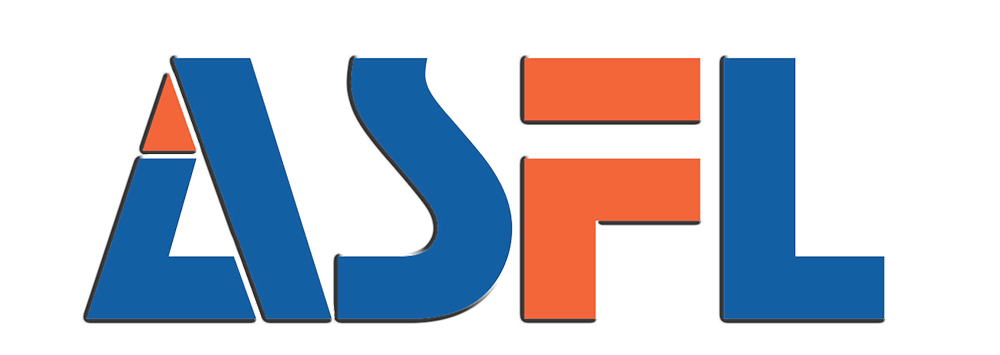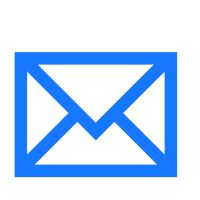Understanding Small-Scale Water Bottle Filling Machine Requirements
What defines a small-scale water bottling machine?
Most small scale water bottle fillers can manage between 200 to 2,000 bottles each hour. They generally need no more than 150 square feet of floor space and only 1 to 3 people to run them day to day. Flexibility tends to matter more than raw speed for these operations. About 62 percent of craft beverage startups actually go with semi automatic models according to Bottling Equipment Trends 2023. This makes sense when we look at how different they are from big commercial systems that run non stop. Small producers love the modular designs because they let folks switch formats quickly. It's super important for companies trying out various bottle sizes or launching limited edition products during certain seasons.
Key differences between small-scale and commercial production equipment
| Feature | Small-Scale | Commercial |
|---|---|---|
| Speed | 10–30 bottles/minute | 80–500 bottles/minute |
| Automation Level | 20–60% automated | 90–100% automated |
| Energy Use | 3–7 kWh | 18–45 kWh |
| Changeover Time | 15–30 minutes | 2–4 hours |
| Price Range | $12k–$85k | $200k–$1.2M+ |
This efficiency gap explains why small water brands achieve 23% faster ROI using appropriately scaled equipment according to production requirement analyses.
Common applications and operational requirements
These machines are best suited for:
- Niche beverage startups producing –5,000 bottles daily
- Seasonal operations such as farm-sourced spring water bottling
- Product testing phases requiring –10 format changes per month
Essential operational requirements include 480V three-phase power, access to municipal water lines, and adherence to ISO 22000-compliant sanitation protocols. With quarterly maintenance, most compact models maintain 92–95% uptime–a critical factor for operations with limited technical support.
Matching Water Filling Machine Technology to Product Type
Gravity Fillers for Still Water and Low-Viscosity Liquids
Gravity-fed systems use liquid weight to fill bottles, making them ideal for still and flavored waters. They offer a cost-effective entry point for startups, with fill accuracy within ±1% (Industry Standard 2024). Their simple design minimizes maintenance needs but is unsuitable for foamy or carbonated products.
Overflow Filling Systems for Consistent Fill Levels
When visual consistency is key, overflow filling ensures uniform fill levels across varying container shapes. By submerging the bottle neck during filling, this method achieves precision critical for premium branding. Though slightly slower–15–20 fills/minute versus 25+ for gravity systems–it reduces product waste by 3–5% in testing scenarios.
Counter-Pressure Filling for Carbonated Water Production
Keeping carbonated drinks bubbly takes some special care in production. The counter-pressure filler system works by shooting CO2 into bottles right before they get filled, which stops all that pesky foaming and gas escaping. Most manufacturers report around 98% carbonation stays intact through multiple production runs with this approach. But there's a catch – the equipment needed costs anywhere from 40 to 60 percent more than regular filling setups. For companies making sparkling water products where those tiny bubbles are everything, this extra expense is worth it according to market analysis. Brands that skip this step often end up with flat, disappointing products that just don't cut it on store shelves anymore.
Aligning Liquid Characteristics With the Right Filling Technology
Your water’s viscosity, carbonation level, and particulate content determine machine compatibility. Still, low-viscosity water performs well in gravity systems, while pulp-containing functional waters require piston fillers with wider nozzles. Choose machines with modular nozzles or adjustable pressure ranges to accommodate future recipe changes without major retooling.
Sizing the Machine: Production Volume and Capacity Planning
Assessing daily output needs for small-scale operations
Small-scale operations (–5,000 bottles/day) must plan capacity carefully. Industry data shows 78% of new producers overestimate initial demand by 40–60%, leading to underutilized equipment. Calculate baseline needs using:
- Shift length × hourly filling cycles
- Container size variance (500ml vs. 1L)
- Seasonal demand fluctuations (±30% common in first 3 years)
For example, a 12-hour operation filling 500ml bottles at 20 cycles/hour should select a machine rated for 12,000 bottles/day to allow for growth spikes.
Matching water bottle filling machine capacity to growth goals
Machines with 25–50% excess capacity over current needs reduce upgrade frequency by an average of 18 months. For businesses targeting 200% growth in two years:
| Production Stage | Capacity (bottles/day) | Key Features | Upgrade Timing |
|---|---|---|---|
| Startup Phase | 500-1,000 | Manual loading, 2-head filler | Months 0-6 |
| Growth Phase | 3,000-5,000 | Conveyor integration | Month 6-18 |
| Maturity Phase | 10,000+ | Full automation | After 24 months |
Modular systems can reduce capital expenditure by 35% compared to purchasing full commercial lines upfront.
Case study: Scaling from 500 to 5,000 bottles/day efficiently
A spring water producer saved $58,000 in unnecessary equipment costs by:
- Starting with a semi-automatic machine (1,200 bottles/day)
- Adding parallel fillers during peak seasons
-
Implementing PLC controls for batch tracking
This phased strategy maintained 92% machine utilization while tripling output annually.
Avoiding under- or over-investment in production capacity
Undersized machines lead to 22% longer lead times during demand surges, while over-capacity systems waste $18–$24 daily per unused filler head. Balance immediate needs with three-year projections–most small bottlers reach optimal efficiency at 60–70% of a machine’s maximum rated capacity.
Manual vs. Semi-Automatic vs. Fully Automatic: Choosing the Right Automation Level
Manual Water Filling Machines: Low Cost, Limited Output
Manual systems offer the lowest entry cost, starting under $15,000 (2023 Packaging Industry Report). They require hands-on operation for bottle placement, filling, and capping–ideal for startups producing fewer than 500 bottles daily. However, output rarely exceeds 10–15 bottles per minute, and labor accounts for 60–70% of operational expenses.
Semi-Automatic Bottle Filling Machines: Optimal Balance for Growing Brands
Semi automatic systems bring together human supervision and machine operation, typically handling around 25 to maybe even 40 bottles every minute while cutting down on labor expenses by roughly 40 percent compared to fully manual operations. According to industry reports, companies growing their production from approximately 1,000 up to about 10,000 items each day tend to see their investment pay off somewhere between twelve and eighteen months when they switch to these hybrid setups. The equipment features adjustable filling mechanisms and easily swapped components that let manufacturers handle different sized containers without needing major modifications to the machinery itself.
Fully Automatic Water Filling Machines: Justifying Investment for Future Scale
The fastest fully automated bottling lines can handle over 100 bottles every minute with spillage rates below half a percent, though getting one set up costs well over $150k upfront. Material waste does go down quite a bit though, around 30% less than what happens with manual filling. But here's the catch these machines really start paying for themselves only if they run for 16 hours or more each day straight through. Looking at some recent numbers from the beverage sector in 2023, most small scale producers who invested in full automation ended up landing contracts that were actually three times bigger than what their current operations could handle.
Why Higher Automation Doesn’t Always Mean Better ROI for Small Producers
| Factor | Manual System | Semi-Auto | Fully Auto |
|---|---|---|---|
| Breakeven Production | 300/day | 1,200/day | 5,000/day |
| Labor Hours/1k Bottles | 8.5 | 3.2 | 0.7 |
| Energy Cost Increase | - | +15% | +40% |
Operations producing fewer than 2,000 bottles daily often see 27% faster ROI with semi-automatic systems due to lower maintenance and energy costs, which offset slightly higher labor expenses. Incremental upgrades–such as adding conveyors or capping stations–allow scaling without the risk of stranded capacity.
Total Cost of Ownership and Long-Term Value Considerations
To really get what a water bottle filling machine will cost, businesses need to think past just the sticker price on the equipment itself. What most people call total cost of ownership or TCO isn't something found in some fancy procurement manual somewhere. It's basically everything from when the machine arrives at the factory floor until it gets retired years later. We're talking about installation fees, daily running expenses, those unexpected repair bills, plus what it takes to keep the machine updated with new features as technology changes. For smaller manufacturers who are already walking a tightrope between covering costs and expanding their operations, these hidden expenses can make all the difference between success and failure in the long run.
Water Bottle Filling Machine Cost: Entry-Level to Advanced Systems
Manual systems start at $15k (ideal for startups bottling <500 units/day), while semi-automatic models ($45k–$80k) handle 2–5x higher volumes with improved precision. Fully automated lines ($120k+) are best suited for producers exceeding 10,000 bottles daily. Consider this cost-to-capacity tradeoff:
| System Type | Initial Cost | Production Rate | Ideal Use Case |
|---|---|---|---|
| Manual | $15k-$30k | 200-500/day | Seasonal producers, startups |
| Semi-Automatic | $45k-$80k | 800-2,500/day | Expanding brands |
| Fully Automated | $120k+ | 5k-15k/day | Large-scale contract bottling |
Hidden Costs Beyond the Initial Purchase Price
Maintenance contracts (12–18% of machine cost annually), energy consumption ($2k–$7k/year), and downtime losses (averaging $150/hour) impact profitability for 73% of unprepared buyers (Packaging Digest 2023). Also factor in sanitation compliance upgrades ($8k–$15k) and technician training ($120/hr).
ROI Comparison: Manual vs. Semi-Automatic Systems Over 3 Years
While manual systems have lower upfront costs, semi-automatic models deliver 32% higher ROI within 18 months according to Beverage Production Quarterly (2024). Key drivers include:
- 40% reduction in labor costs (2 operators vs. 5 for manual)
- 15% less material waste through precision filling
- 3x faster order fulfillment capacity
Design Flexibility and Scalability to Support Future Product Lines
Choose modular machines that support retrofits–investing $25k today in swappable carbonation modules can prevent a $200k+ system replacement later. 68% of successful craft water brands credit scalable equipment with enabling product line extensions (e.g., sparkling or infused variants) within two years.
FAQ
What are small-scale water bottle fillers ideal for?
Small-scale fillers are ideal for niche beverage startups, seasonal operations like spring water bottling, and product testing phases requiring frequent changeovers.
How many bottles can a small-scale water bottling machine fill per hour?
Most small-scale machines can fill between 200 and 2,000 bottles per hour.
What are the hidden costs associated with purchasing a water bottle filling machine?
Hidden costs may include maintenance contracts, energy consumption, downtime losses, sanitation compliance upgrades, and technician training.
What types of filling technologies are available for bottled water production?
Filling technologies include gravity fillers for still water, overflow systems for consistent fill levels, and counter-pressure systems for carbonated beverages.
What factors determine the compatibility of a filling machine with my product?
Factors include water viscosity, carbonation level, and particulate content within the liquid being bottled.
What is the ROI comparison between manual and semi-automatic systems?
Semi-automatic systems deliver 32% higher ROI within 18 months due to reduced labor costs, less material waste, and faster fulfillment capacity.
How can modular designs benefit small producers?
Modular designs allow small producers to scale efficiently, accommodate new product types, and reduce upfront capital expenditure.
Table of Contents
- Understanding Small-Scale Water Bottle Filling Machine Requirements
- Matching Water Filling Machine Technology to Product Type
- Sizing the Machine: Production Volume and Capacity Planning
- Manual vs. Semi-Automatic vs. Fully Automatic: Choosing the Right Automation Level
- Total Cost of Ownership and Long-Term Value Considerations
-
FAQ
- What are small-scale water bottle fillers ideal for?
- How many bottles can a small-scale water bottling machine fill per hour?
- What are the hidden costs associated with purchasing a water bottle filling machine?
- What types of filling technologies are available for bottled water production?
- What factors determine the compatibility of a filling machine with my product?
- What is the ROI comparison between manual and semi-automatic systems?
- How can modular designs benefit small producers?





